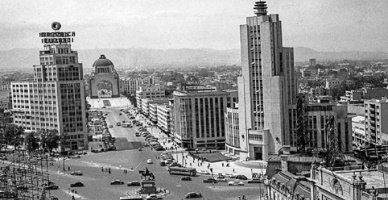What is free software?
We explain to you what Free Software is and the freedoms that this type of program allows. In addition, the types that exist and some examples.
-
What is free software?
Free Software is called to those computer programs that give their users , by explicit decision of their programmers and designers, access to the original source code or programming code in which they were manufactured , so that you can freely copy, modify, customize and distribute it . This gives rise, therefore, to multiple versions of the same program, whose appearance does not represent a legal or ethical violation of the original program.
The term Free Software is attributed to the American Richard Stallman, who was the founder of the Free Software Foundation in which a significant number of expert computerists aspired to develop a totally free Operating System , which they called the GNU Project (To distinguish it from Unix).
This project would allow its advanced users to collaborate with its development and improvement, free of charge and community, going against the traditional software companies, which keep the source code of their products.
While many of the Free Software presentations are free or cost the equivalent of their distribution only (and not the payment of copyright), Free Software should not be confused with Freeware or Free Software (usually in trial versions), nor should it be interpreted as an allegation in favor of piracy (theft of copyrighted software).
The idea is precisely to create software that belongs to those who use it and that can be adapted to their needs by themselves.
There is an important tendency, especially in countries of the so-called Third World, to implement only Free Software in their official institutions or state organizations, thus replacing copyrighted programs that generate annual license renewal expenses.
This in addition to saving money gives them greater autonomy in the handling of their information and allows them to avoid risks to their sovereignty, since the free code of these pieces of software can be adapted free of charge to their specific needs.
-
Essential freedoms

Known as “the four essential freedoms”, the following set of permits is essential to distinguish between Free Software and the traditional commercial type.
- Freedom # 0 . Freedom to execute the program as desired, for any purpose, without the need to notify anyone.
- Freedom # 1 . Freedom to study the operation of the program and alter it so that it performs the tasks that are desired. For this, free access to the source code of the program is a requirement.
- Freedom # 2 . Freedom to redistribute copies of the original program, for the enjoyment and help of the community , without the need to notify anyone.
- Freedom # 3 . Freedom to distribute copies of the modified versions to third parties, without the need to notify anyone, allowing the entire community to benefit from alterations and new versions of the program.
A program is considered as Free Software if it gives its users all these described freedoms. Otherwise, it is not a free program. There are several non-free distributions of programs obtained by modifying the source code of these free programs, which is considered by the Free Software community as something contrary to ethics .
-
Types of free software
In principle, Free Software can be of any type, from operating systems to control in a personalized way the operation and resources of the computer , to applications adaptable to the needs of the user , interventible videogames, and peripheral management programs that can be modified and thus meet the specific requirements of various pieces of hardware .
-
Free software examples

Some of the most popular distributions or presentations in the world of Free Software are the following:
- GNU / Linux . One of the most important programs historically and popularly, led the effort for open source software in the world of the Internet since 1983.
- Chrome OS . Based on the Linux kernel, the operating system currently under development by the company Google Inc . It will use the Google Chrome browser as its main interface and is based 100% on the cloud.
- VALO-CD . This is a CD with open source software designed to operate under the Microsoft Windows environment, developed by Finnish programmers in 2008.
- OpenDisc . Another set of open source tools designed to work in Microsoft Windows, created in 2007 to educate users on the use of Linux.
- Ubuntu . It is a free distribution of GNU / Linux that uses GNOME technology as its virtual desktop environment, whose creative company survives by offering technical support to its users.




